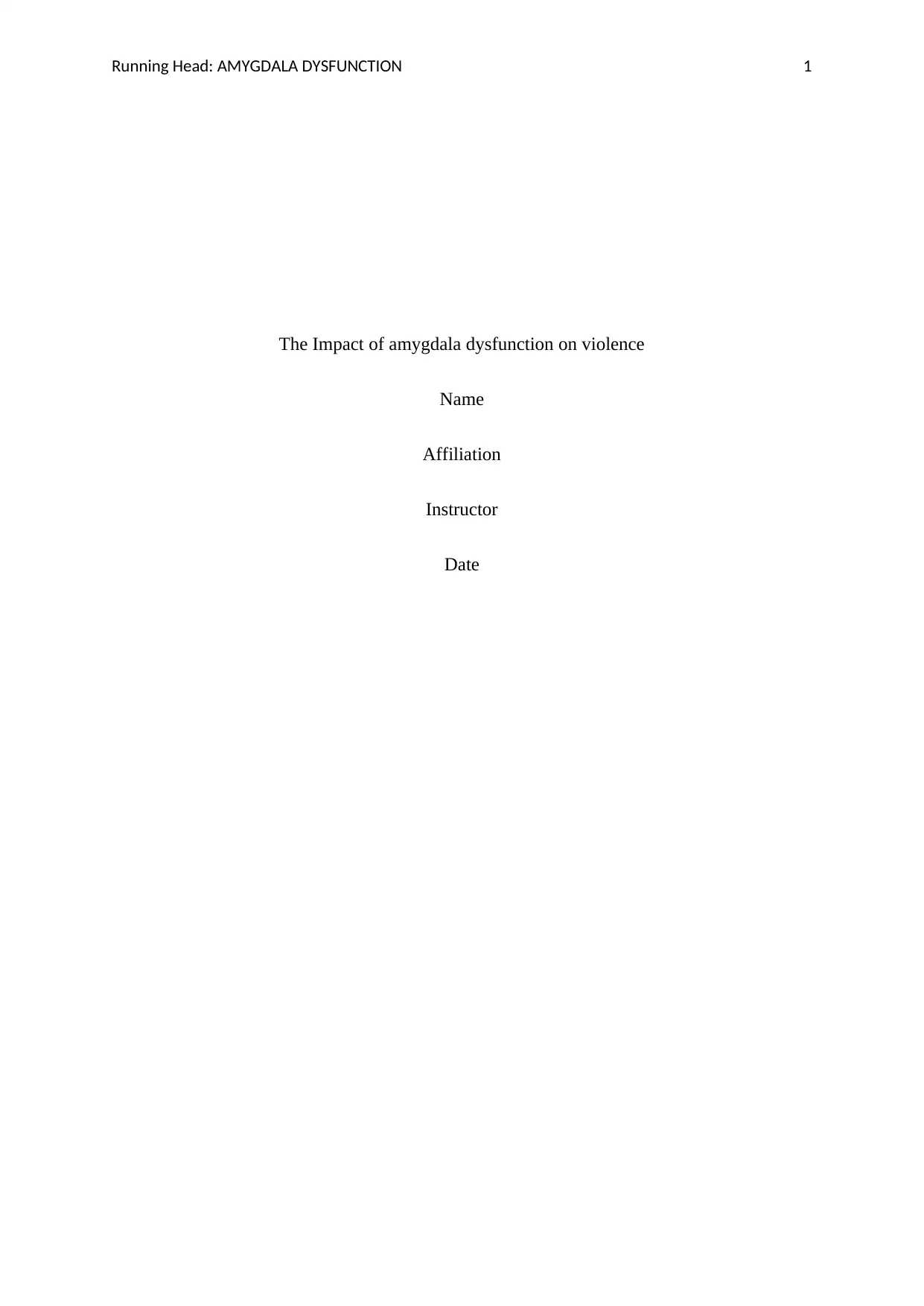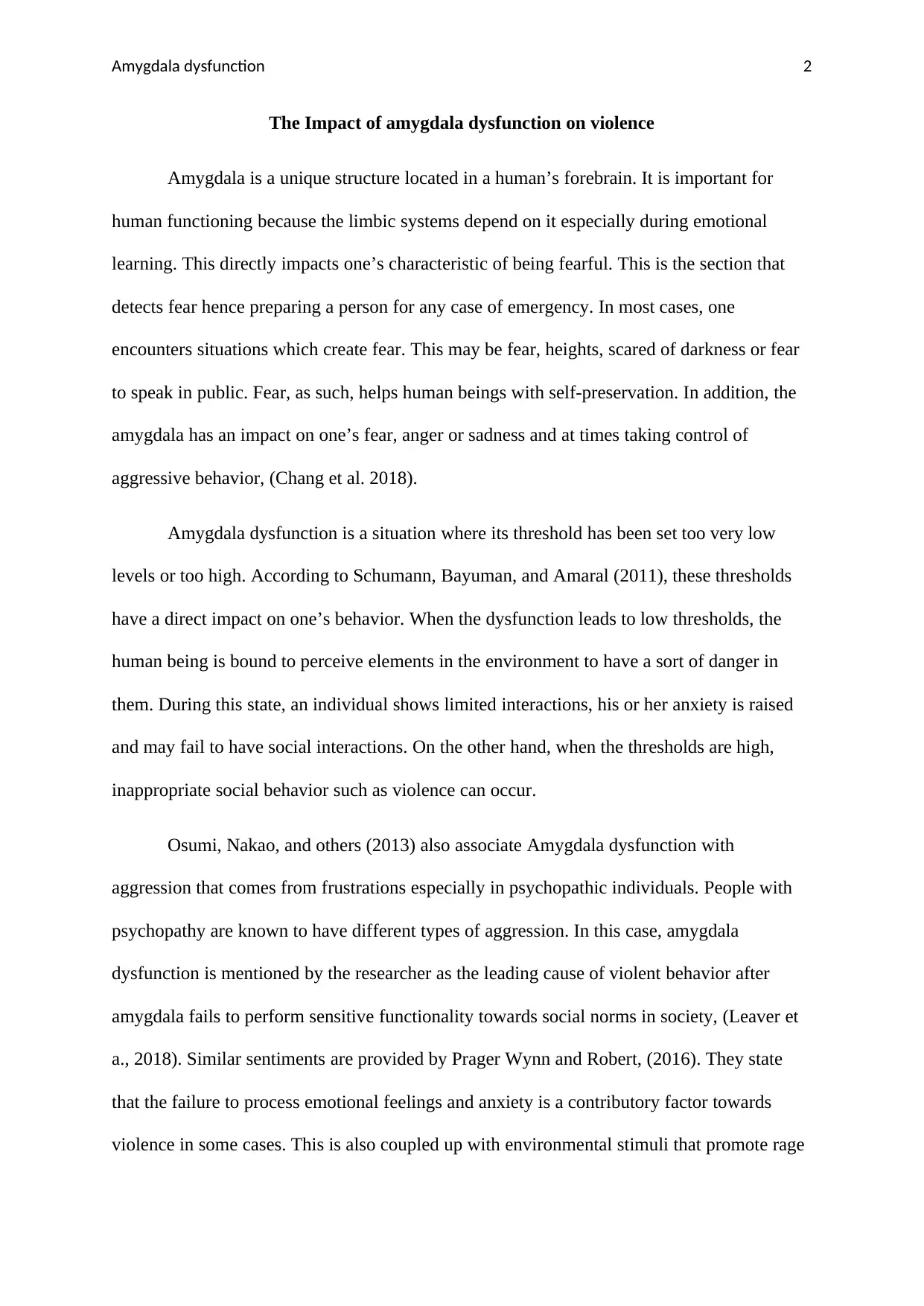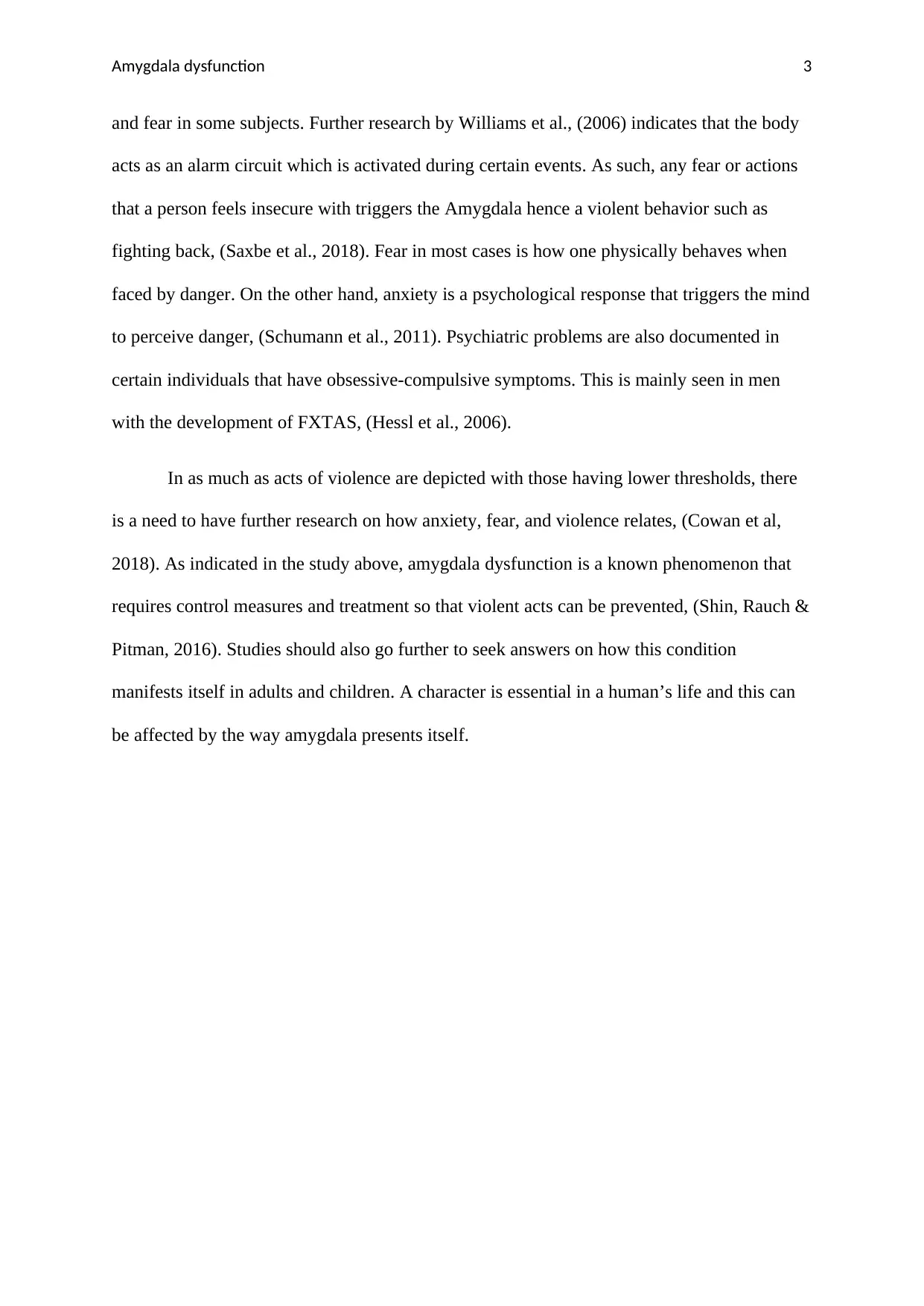An Analysis of Amygdala Dysfunction's Influence on Violent Behavior
VerifiedAdded on 2023/04/11
|4
|555
|183
Essay
AI Summary
This essay delves into the impact of amygdala dysfunction on violent behavior, exploring the role of the amygdala in emotional regulation and its implications for aggression. It discusses how dysfunction, whether through low or high thresholds, can lead to increased anxiety, inappropriate social behavior, and violent tendencies. The essay references key studies and research, including the role of fear, anxiety, and environmental stimuli in triggering violent responses. It also touches upon psychiatric conditions and the need for further research on the relationship between amygdala dysfunction, violence, and related emotional responses. The essay emphasizes the importance of understanding and addressing this condition to prevent violent acts and highlights the need for further research on how this condition manifests itself in adults and children.
1 out of 4











![[object Object]](/_next/static/media/star-bottom.7253800d.svg)